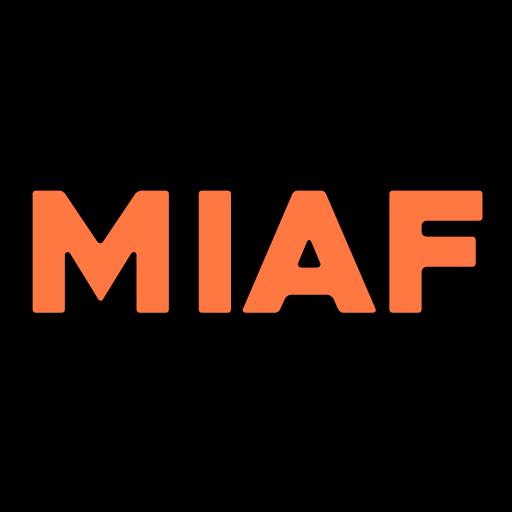
Why is it so hard for so many people to believe that such a thing as an ‘animated documentary’ not just exists but is even possible? Step outside the rarefied aesthetic courtyard of your worker-day animation festival and the mention of the term ‘animated doco’ just draws blank stares; like marshmallow roof tiles, Euclidean aquatics or clean coal, it is just a term that does not seem to make sense to even fairly bright people.
Much of it – surely – has to do with the broader community’s perception regarding the confines of animation as a medium for kids films, video games and TV programmes masquerading as toy ads and subliminal calls to conformity. Let’s take that as a given and go a little broader.
Here is an idea. Most makers of animated documentaries are not primarily documentarians but animators. Embarking upon an animated doco project, a good number of animators will use their default filmmaking skills (ie, animation) to present a documentarian rendition of their story if that is the driving force of their film. This is not just an outcome of the way their hands work, it is an outcome of the way their minds work. A live-action documentarian, on the other hand, is not just unlikely to veer off in this direction but probably struggles to picture making a film that his or her live-action camera has no hope of capturing or for which footage does not already exist.
This not simply limits the pool of animated documentarians, it effectively ring-fences almost every aspect of the animated documentary eco-system – from inspirational role models to educational exposure to funding criteria relevance to support crew and production assistance to screening opportunities to mainstream viewer acceptance (of which, more anon).
Another way of looking at it is that the suggestion of an ‘animated documentary’ taps into the limited (and, in turn, limiting) notion that if it’s animated then it can’t be real. Bloody hell…. where to begin with this?
Let’s not step too deep into a discussion about “what is real”. Instead, let’s just make the point that some things that masquerade as documentaries are flat-down lies (google ‘lemming suicide’ as the classic example), some documentaries contain subject material for which the science has been updated and – most importantly – something approaching 100% of documentaries contain, at the very least, the curation of facts if not the downright manipulation of the little tykes. A good many films or TV programmes that are immediately received and recognised as “documentary” contain a significant amount of subjective material, some of it bordering on ‘ethical propaganda’.
So why does that get a free pass, but the notion of bringing in an animator to create an animated visualisation of what an animated documentary is trying to portray does not even get to the starting line? The game is rigged folks!
Time to dust off some definitions perhaps.
John Grierson was a man not to be trifled with. A Scotsman with a Scotsman’s tolerance for fools, he is regarded as the founding father of British documentary. His career is a testament to a filmmaker who not just thought deeply about the form but defined many of its very foundations. He was also the founder of the General Post Office Film Department, an abstract animation incubator passing itself off as the in-house advertising department of the GPO in the 1930’s and he went on to establish the National Film Board of Canada. When did this man sleep! It was Grierson’s idea to invite one of the GPO Unit’s most promising young animators to come to Canada to establish their stand-alone animation department which is how Norman McLaren got that gig. But you probably know that.
But we digress. Grierson defined documentary (as in documentary in a general sense, regardless of technique) as “the creative treatment of actuality”.
The-creative-treatment-of-actuality. Hmmmmm….. that holds up. And – and – it leaves plenty of room at the table for any animators that want to have a crack. So why – nearly 80 years after Grierson coined that definition – is the notion of an animated documentary still something that is waving its arms around in the air trying to gain some attention?
Grierson’s definition has the uplifting virtue of brevity (and right) but it fires its only shot into the warm dark night of an ideal world of hopes, dreams and good intentions. Meanwhile, back at the bus stop of the universe we inhabit there are some people who are wondering if they will be allowed on the bus – if it ever turns up.
‘The Animation Studies Reader’ (edited by Nichola Dobson, Annabelle Honess Roe, Amy Ratelle and Caroline Ruddell) is a brilliant book. Anybody with the slightest inclination to look under animation’s hood could do a lot worse than invest in a copy. It includes a reprint of the Honess Roe essay ‘Absence, Excess and Epistemological Expansion: Towards a Framework for the Study of Animated Documentary’ which was originally published in ‘Animation: An Interdisciplinary Journal’ (2011).
In it, Honess Roe starts with Grierson’s definition before journeying across those of other scholars and writers on the subject before arriving at her own three part definition. To absorb this brilliantly constructed pathway you need to buy the book but, with full tribute and the greatest of respect, her considered thoughts are offered here and resonate with the topic at hand.
An animated documentary qualifies as such if it …. “(i) has been recorded or created frame by frame; (ii) is about the world rather than a world wholly imagined by its creator and (iii) has been presented as a documentary by its producers and/or received as a documentary by audiences, festivals or critics.” Each emphasis is Honess Roe’s.
That third criteria is really what this is all about. In that trio of proposed adjudicates that she poses (“audiences, festivals or critics”) Honess Roe is smart to include the “or”. If she had made it an “and” we would really be in trouble because obtaining the existential approbation for the form of animated documentary beyond the walls of Chateau Festivale is a work still very much in progress.
And yet the evidence is all around us. Putting aside the renditions of ‘sequential’ images of animals and rituals painted and carved onto cave walls and ancient artefacts thousands of years ago, Winsor McCay laboured to create 25,000 drawings in the 1918 animated documentary The Sinking of the Lusitania. Norman McLaren’s classic film Neighbours (1952) won an Oscar not for animation but in the ‘Documentary’ section. What is Ryan (Chris Landreth, 2004) if not a documentary?
One-offs? Hardly. LIAF’s annual ‘Animated Documentaries’ programme is testament to the vitality and diversity of filmmakers who have turned to animation to either portray something the (live-action) camera simply could not, something that was missed or, in many cases, an extra dimension that speaks to an emotional core of the film that simply cannot be portrayed any other way. Period.

We all know what a broken home is and having a child narrate the impact of it brings that home. But deploying the imagery of a house cracking along seams, turning into a pile of blocks and witnessing that pile tumbling down into its disassociated pieces brings a dimensionality to the story that only animation can.
How else can you visually depict the fluctuating emotional and mental states of two people who have agreed to spend ten days in a completely pitch black room together? Go on, make a live-action doco of that, I dare you (Andy Warhol excepted).
Good luck making a full journey into the minds of serial killer groupies without an illuminating boulevard of animation on which to wander and window shop.

What better method to see the world of victims of systemic government sanctioned removal of children from their families as a tool of socio political warfare?
Issues around body image are all about the manipulation and distorting of images – animation was invented to describe that in the best way our brains can absorb it.

And if you know of a better tool than full throttle animation to depict the psychedelification of Jimmy Page’s legendary ’59 Telecaster guitar, we’re all ears.
ONLINE Pre-order tickets
Malcolm Turner, LIAF Co-Director
















